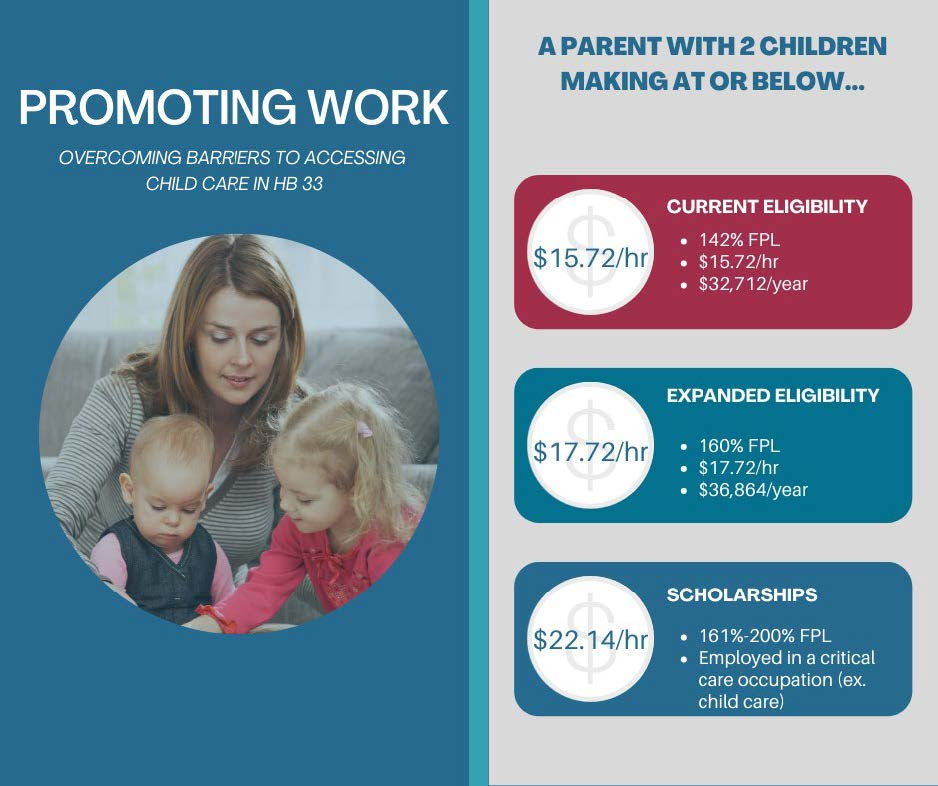Groundwork Ohio Provides Testimony Ohio Senate Finance Committee
- Jen Peters

- May 17, 2023
- 4 min read
Updated: Jul 18
By: Lynanne Gutierrez, Chief Operating & Policy Officer at Groundwork Ohio

This week, on behalf of Groundwork Ohio, I provided testimony in support of Substitute House Bill 7 in front of the Ohio Senate Finance Committee.
Ohio Senate
Finance Committee
Sub. HB 33
Lynanne Gutierrez, Chief Operating & Policy Officer
Groundwork Ohio
May 16, 2023
Chair Dolan, Vice Chair Johnson, Vice Chair Cirino, Ranking Member Sykes and members of the Finance Committee, my name is Lynanne Gutierrez and I am the Chief Operating and Policy Officer at Groundwork Ohio.
Today, I join with fellow advocates, professionals, community leaders and families from across Ohio in thanking you for the opportunity to provide interested party testimony on Substitute House Bill 33, Ohio’s FY 2024-2025 budget bill, regarding the state publicly funded child care program.
Groundwork Ohio is a statewide, nonpartisan public-policy research and advocacy organization that champions high-quality early learning and healthy development strategies from the prenatal period to age five, that lay a strong foundation for Ohio kids, families, and communities. Our vision is to make Ohio the best place to be a young child so that every child can reach their full potential.
Specifically, we ask the Committee to support Ohio’s critical care workforce by restoring the Governor’s proposed $150 million in fiscal year 2024 that establishes 12,000 child care scholarships for critical occupations and other direct service professionals including child care professionals. (SC0329).
Critical care occupations include the following fields including child care professionals who make, on average, $12.00 per hour in the state of Ohio:
Children & Community Health
Early Childhood Education
First Responders
Lead Abatement
Mental & Behavioral Health
Nursing
Physicians
Wellness Research & Technology
Figure 1: The Impact of Increased Eligibility & Critical Care Occupation Scholarships

Investing in Child Care Strengthens Ohio’s Workforce
The lack of investment in Ohio’s young children and child care leaves Ohio’s young children behind and jeopardizes our future workforce. All of Ohio’s young children need early learning opportunities to ensure they can reach their full potential and a lifetime of success. It’s no surprise that most children aren’t ready to learn given that only about half of eligible low-income children ages 0-5 under 200% of the Federal Poverty Level, those that stand to benefit the most from early learning interventions, are able to access any state funded child care, preschool or Head Start. (See Groundwork Ohio, Early Childhood Data Dashboard)
Figure 2: Kindergarten Readiness, Children Who Start Behind Stay Behind

The lack of investment in Ohio’s young children and child care directly impacts a working mothers’ ability to provide for her family.
Figure 3: Moms Need Child Care to Work (See Appendix A, Public Opinion Strategies, Ohio Statewide Poll Key Findings)[i]

The lack of investment in Ohio’s young children and child care restricts Ohio’s workforce today in and in the future. A strong child care industry means parents can go back to work today knowing their child is receiving early learning experiences while building and strengthening the workforce of tomorrow.
On average, child care costs are more costly than rent in Ohio. Our cost ratio is among the worst in the nation.
Further, child care availability is severely limited. 60% of rural Ohioans and 30% of all Ohioans are living in a child care desert, defined as an area with three times as many children as licensed child care slots.
Figure 4: Child Care Wait Lists

The lack of investment in Ohio’s young children and child care impacts Ohio’s ability to attract new business investment across the state. Right now, Ohio parents are forced to choose between taking on full-time employment because they cannot afford the high cost of child care.
Figure 4: 800,000 working parents have cut back their work hours

Given these alarming challenges of working parents and the recognition of these challenges by voters demonstrated through the poll, it is no surprise that 80% of voters and 87% of parents favor increasing funding in the state for child care and early learning programs.
Ohio parents, voters, child care professionals and business leaders support investments in child care. Several dozen statewide early childhood organizations and nearly 1,000 frontline child care professionals have signed a letter elevating the need for more investment in the early childhood workforce including elevating the need to restore Governor DeWine’s proposed $150 million in child care scholarships that include child care professionals. (See, Appendix B, Workforce Letter Printed in Columbus Dispatch on 5/9/23) In addition to the child care workforce, business leaders are also calling for more state investment in child care. In October 2022, the Ohio Chamber of Commerce released its Blueprint for Ohio’s Economic Success, leading its recommendations for reducing barriers to employment with the recommendation to remove child care as a barrier for caregivers and working parents. Earlier this year, nearly 40 business leaders from across the state signed an open letter to policy makers supporting investments in child care. including the $150 million child care scholarship investment reflected in SC 329 (See Appendix C, Business Letter Printed in Columbus Dispatch on 3/29/23).
Thank you for your consideration. We urge you to support SC329 to support critical care occupations through a necessary workforce development strategy—access to child care. I am happy to answer questions you have today. Please use as a resource during the budget process and I can be reached directly via email at lgutierrez@groundworkohio.org or by phone at 614-204-6106.
[i] NOTE: All data referenced in this testimony is from the Public Opinion Strategies Public Opinion Strategies, Ohio Statewide Poll Key Findings attached hereto as Appendix A unless otherwise cited within the document.



